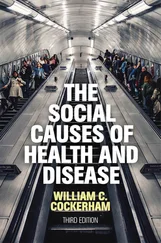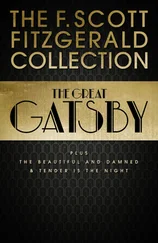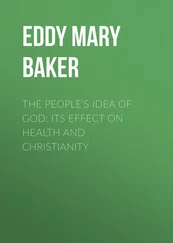Rami Bleckt
The Three Energies. The Forgotten Canons of Health and Harmony
© Rami Bleckt
© Publishing Company «Blago-Darenie»
* * *
"Rami is a professional psychologist, astrologer, yoga instructor and Ayurveda practitioner, with vast practical experience and knowledge. This book is not merely an academic research, it is a result of many years of Rami's practice as a lecturer and a consultant. He managed to adapt ancient Eastern science of Gunas to the practical application in the modern world, and to deliver it to the present-day readers in a clear and simple form. As well as Sattva Guna is a key to the mind and psychological healing, Rami's book is significant for those who are seeking practical and spiritual approach to understanding of the mind and emotions."
Professor David Frawley, the author of many bestsellers, world-wide recognized Master of Oriental Astrology and Auverda
The book "Three energies" by Rami Bleckt, PhD, is highly valuable for the readers. It makes it possible to get in touch with practical application of the following principles of ancient wisdom. The readers can see the world through the prism of the author's view and perceive something they have never seen before. This material is a world of Universal laws of Love, Harmony and Justice in action. The practical experience of the author turns dull theory into vibrant reality, and inspires us to follow, apply and hands out Rami's life philosophy. This will help all readers to become happy and teach how to make others happy around them as well."
V. Tuneev [BV Gosvami], one of the best experts of the ancient Indian philosophy and psycology
I would like to express my deep gratitude to all Teachers, through whom I was lucky enough to get a glimpse of how truly the highest knowledge is.
The English version of this book was published only due to the tremendous work that my friends have done, Zulfat Khismatulin – he translated this book and Patricia Raferty – she edited the book.
Many thanks to them!
I hope that their belief that this book will bring a lot of good into lives of readers, will come true.
Also I would like to thank Shmuel Rabin, Julia Verba, Elena Skomorohova, Boris Shitikov, Olga Shiryaeva, Elena Korotaeva and Sergei Medvedev for their great help. The book would not have become a reality without their assistance.
Special thanks to my wife, Marina, for she, by just using some of our lecture notes, has written several important chapters instead of me.
Also, would like to further thank Professor David Frawley, for the important recommendations that he has given me and for the wonderful introduction that he wrote.
Inspiration for writing this book
Life itself is neither good nor bad: it is a reservoir of both good and bad, depending on what you make of it.
Michel de Montaigne
In September 2006 we travelled around South India. It was extremely interesting. We undertook a full panchakarma course (cleansing the body of slugs and toxins) and met incredible people – astrologists, yogis, gurus (spiritual teachers)… But the most amazing of all was that we met one well-known Ayurvedic doctor. He was 80 years old and looked incredible, full of happiness and peace.
All his life he studied and practiced Ayurveda and became very successful. Many awards and photographs with government letters of appreciation were around his office. He would look into men’s eyes, check their pulse, sometimes press different pressure points on the body and then give a correct diagnosis of the condition of different internal organs. Then he would give recommendations about diet and lifestyle. Some of us were given special Ayurvedic medicine. The doctor spent more time with the youngest member of the group, and found several very serious diseases, about which the young man knew. Other (Western) doctors had recommended a surgery for this young man. This Ayurvedic doctor told our young friend that if he followed the prescribed instructions, he would be cured in a few months. He prescribed some kind of herbs from the Himalayas which needed to be taken after boiling for several hours. The young man followed all the instructions and as a result the benign tumour, gastritis and urine-genital problems disappeared. The Ayurvedic doctor gave him not just herbs but also the knowledge by which the herbs miraculously worked. If one follows this system from birth then there will be no need for any medical treatments.
After few days we met one famous astrologer that prominent politicians and businessmen come to consult with. Meeting him was possible only due to a recommendation from a Maharaj we knew. Meeting this Master was of great significance for me because he agreed to become my teacher. Over the next few days he taught me many important lessons. He amazed all of us by his deep understanding of life and different karmic situations and also by his psychic abilities. He also spoke about the knowledge with which the inauspicious influence of planets can be neutralized and even how to become liberated from the laws of karma. For ordinary people such knowledge can eliminate disease and suffering and shed light on how one can be happy, healthy and harmonious.
Both teachers looked effulgent because they had applied this knowledge in their lives; despite their old age they radiated health and happiness. They inspired me to write this book in a way that people living outside of India can access this knowledge. In the past, Indian sages had this knowledge but nowadays few people know about it and even fewer realize how important and practical this knowledge is. I have seen so many times the phenomenal changes in people’s lives when they start using this knowledge: eradicating different physical and psychological diseases; eliminating problems from their personal lives; achieving social success; developing powerful intuition; progressing rapidly in spiritual life. The most important transformation is the overwhelming contentment that develops independent from external circumstances. If you want these miraculous changes in your life too you should read this book at least once.
Foreword by Pr. David Frawley
Yoga is not just a physical discipline but contains a wonderful practical philosophy of life and healing. For this it is connected to Ayurvedic medicine, the traditional natural healing system of India, and to Vedic astrology, India’s science of the stars and of karma.
Yoga philosophy has contributed many profound insights to world spirituality. Yoga sees the universe as a play of two primary forces, the power of consciousness or what is called the Purusha in Sanskrit, our inner being, and the forces of nature or what is called Prakriti or the primary power of creation. One of the main insights of yogic thought is its understanding of all the forces of nature according to three gunas or primary qualities. The term guna means what binds the soul as the forces of nature easily become powers of attachment to the external world of time and space and draw us away from resting in our deeper eternal nature of the Purusha.
Each of the three gunas called Sattva, Rajas and Tamas has its particular qualities and roles in the cosmic order:
Sattva, which means the quality of truth or being, is identified with light, mind, consciousness, goodness, virtue, harmony and balance. Rajas, which means turbulence and agitation, is identified with energy, life, emotion, manifestation, assertion, disequilibrium and change. Tamas, which refers to darkness, is identified with matter, inertia, the unconscious, dullness, resistance, entropy and stability.
All three qualities have their necessary place in the world of nature starting with the three great cosmic forces of light (sattva), energy (rajas) and matter (tamas). Everything in the universe consists of various interrelationships and intertransformations of these three powers of light, energy and matter, as the great scientist Einstein revealed in his equation E=MC 2or energy equals matter times the speed of light squared. The forces of nature are constantly moving back and forth between all three qualities, which are not separate states but related modes of nature’s workings.
Читать дальше












